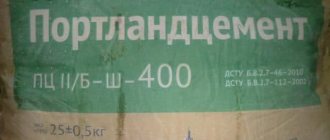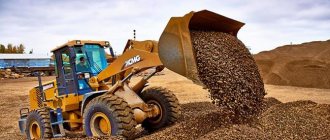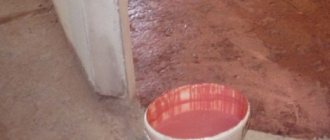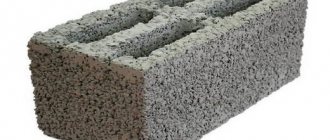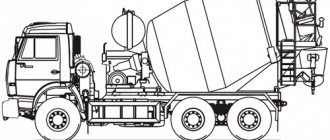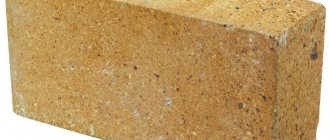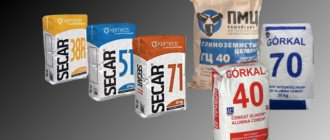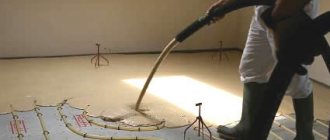The construction market is constantly expanding the range of roofing materials, both new options are appearing and old ones are being modified. But there is one that remains unchanged for many years - slate, also known as asbestos-cement sheet.
The most common option is corrugated slate, but flat sheets of asbestos cement should not be discounted. In this article we will talk specifically about flat slate, we will understand its advantages, characteristics, scope of application, etc.
Types of flat slate
Flat asbestos-cement sheets are divided into two groups:
- pressed;
- without pressing.
Pressed ones are more popular in private housing construction. It is produced by pressing on it with a press. In this way, improved density characteristics are obtained - up to 1.8 g/cm³, and impact strength - up to 2.5 kJ/m².
The porosity of the material is low, so its service life is longer. It can also withstand a greater number of freezing and thawing cycles - up to 50, after which the strength of the sheet is reduced by 10%.
Slate produced without pressing is inferior to the previous one in many respects. It can withstand only 25 cycles of freezing and thawing, its density is 1.6 g/cm³, and its resistance to mechanical stress is 2 kJ/m². The bending strength is also weaker - 18 MPa, versus 23 MPa for the pressed one.
Video: Asbestos (asbestos cement) sheet / Flat slate
Purpose and use of asbestos cardboard
Given its good technical performance and some advantages over other thermal insulation materials, asbestos cardboard is widely used in various fields of production. In particular, it is popular for thermal insulation of such objects:
- pipelines;
- metallurgical furnaces and their individual elements in order to reduce heat loss;
- tanks for flammable liquids;
- boilers;
- industrial equipment;
- refrigeration chambers.
Asbestos cardboard, which can be purchased at almost any stove and fireplace store or online, is used in the glass and porcelain industries. The material is in demand in the oil refining and construction industries.
Advantages of asbestos cardboard for thermal insulation
Asbestos cardboard, the purpose of which is discussed above, has a number of advantages as a heat insulator.
- A very important property for thermal insulation is the mechanical strength of the material. In direct contact with heaters, other insulators are easily deformed and lose their basic quality. Chrysotile asbestos is a very durable hydrous magnesium silicate (3MgO+2SiO2+2H2O).
- Due to its special structure, asbestos cardboard is insoluble in water, is not damaged by alkalis, does not rot, and can withstand high temperatures.
- The service life of the material used in construction is commensurate with the durability of the main structure.
- Asbestos cardboard is easy to use. Working with it does not require professionalism or the presence of a specific tool. It can be easily punched, sawed, drilled.
- The material does not change volume, does not settle during vertical installation, and has good adhesion to adhesives.
Asbestos cardboard is produced in the form of sheets 2-10 mm thick in various formats. Its practicality is unparalleled, but a huge disadvantage of the heat insulator is the threat it poses to human health.
Scope of application
The main area where flat asbestos cement sheets are used:
- roof;
- house façade cladding;
- production of fences.
In fact, the scope of use is much wider. Alternatively, sheets of flat slate can be used to create flower beds or raised beds in the garden area. Flat sheets can be used to cover balconies and household items. building, street toilet, etc.
Also, cuttings of flat slate are used as formwork for the foundation of a small building. Sheets of high density and thickness are suitable for creating a garden path.
ADC properties and characteristics
Asbestos-cement slabs are produced in the form of rectangular sheets of a number of sizes: 300x120, 300x150, 120x100, 150x100 cm from a mixture of Portland cement and special types of asbestos. Tiles measuring 150x150x10 mm are produced for flooring and wall cladding.
Different colors create the opportunity to choose the color composition of the floor depending on the design intent.
The front surface of asbestos-cement slabs can be smooth or structured, regular gray or painted in other colors, as well as textured.
The composition is impervious to corrosive processes, rotting, chemical reagents, and UV radiation.
Asbestos cement sheets coated with waterproof enamels become less susceptible to hot water. The water absorption rate in this case is comparable to that of glazed ceramic tiles.
Flat slate roofing
Asbestos-cement sheet 8-10 mm thick is used as roofing material. You can use thicker products, but then you will have to strengthen the rafter system, since it will be subject to a large load.
For rafters, take a board with a cross-section of 10 × 15 cm; they are strong enough and can withstand the weight of slate. The distance between them should not exceed 1 m. Then, a vapor barrier is laid on the rafters and the sheathing is installed. It is better to use 5 × 5 cm timber as lathing.
Advice! Treat all wooden parts with an antiseptic and fire-fighting agents (fire retardants) in advance.
Flat slate is nailed to the sheathing, this is done in a checkerboard pattern. Each next row overlaps the previous one. Fixation is not carried out like with wave nails, but special galvanized or stainless steel roofing screws are used.
Before screwing in the self-tapping screw, a hole is drilled in the sheet at a distance of at least 7 cm from the edge of the sheet. A rubber washer is placed under the screws to close the hole.
After installation, in order to protect the slate and extend its service life, it is advisable to additionally paint it with special paint. Before painting, priming is performed.
Scope of application of asbestos cardboard
Asbestos cardboard is used for thermal insulation of equipment, facilities and communications. Including those where protection against fires and fires is necessary. Asbestos cardboard is a non-flammable material. The physical and mechanical properties of asbestos sheets hardly change when heated. Asbestos cardboard can be used on surfaces of equipment and communications with temperatures up to 500 C°. There are no toxic emissions when heated. It is practical to use this material as thermal insulation for furnaces and boilers in industrial enterprises. The use of asbestos sheets reduces the heat transfer of insulated objects, significantly lowers the surface temperature of equipment, improves sanitary conditions in the work area, and reduces the amount of heat that is spent on heating the masonry. As a result, inertia is reduced. This is especially true for equipment that needs to be stopped frequently. Reducing inertia allows you to reduce not only heat loss, but also the time for heating and cooling. Sheet asbestos is used to level air ducts and gas pipelines, and to level surfaces for masonry. They perform thermal insulation between the lining and the outer casing in furnaces. They isolate frame blocks from lining in boilers. I use it as a leveling layer under fiberglass when insulating pipes. In machine/instrument making and radio electronics, soundproofing and electrical insulation materials are made from asbestos cardboard. Such materials are non-flammable and non-toxic. KAOH-2 asbestos cardboard is used to seal detachable devices, instruments, and pipelines operating under a pressure of no more than 600 kPa. Limitations of asbestos cardboard on permissible temperatures:
- for gas – 500 C°;
- for alkalis – 200 C°;
- for inorganic acids – 120 C°;
- for organic compounds, melts and salt solutions – 400 degrees Celsius.
In civil engineering, asbestos cardboard is used as a cheap and practical fireproof and flame retardant material.
Characteristics of asbestos cement sheets
Below is a table with the technical characteristics of flat asbestos-cement sheets.
| Indicators | Meaning | |||||
| Structural | Small size | |||||
| Pressed | Unpressed | Pressed | Unpressed | |||
| Density, not less than specified, g/cm³ | 1,8 | 1,6 | 1,75; 1,8 | 1,7 | ||
| Bending strength MPa (kgf/cm²) | 23 (230) | 18 (180) | 22 (220); 23 (230) | 20 (200) | ||
| Impact strength, kJ/m² | 2,5 | 2 | 2,2 | 2 | ||
| Frost resistance | freeze and thaw cycles | 50 | 25 | 50 | 25 | |
| Residual strength, % | 90 | 90 | 90 | 90 | ||
| Size, mm | length | 3000; 3600 | 1200 | |||
| width | 1200; 1500 | 1500 | ||||
| thickness | 8; 10 | 6; 7 | ||||
Structural composition and varieties
The main production component is branded cement M400-M500, which is mixed with water. When molding, asbestos fibers are added to the structure of slate sheets, evenly distributed within the product, which provides the materials with excellent physical and mechanical properties. The proportion of asbestos added to asbestos-cement slate sheets is 18%.
As already mentioned, in accordance with national production standards, these building materials are manufactured in a flat or wavy format.
- The wave-shaped variety (GOST 30340-95) is available in seven- and eight-wave versions. Also, while maintaining their appearance, the sheets can have 5 or 6 waves. The last two designs are often used when solving specific industrial problems, because not standardized.
- Flat sheets (GOST 18124-95) must have a rectangular shape with a uniform structure. To reduce prices, they may not be pressed (due to their low strength and porous structure, such building materials are used in economic activities where increased mechanical stability is not required).
Also, paint can be added to asbestos-cement slate at the production stage, which increases the aesthetics of the surface being tiled.
Advantages and disadvantages
Flat slate has a number of undeniable advantages. Its advantages include:
- hard – withstands heavy loads;
- resistant to high temperatures;
- durable;
- ease of processing;
- resistant to chemical and biological influences;
- good sound insulation;
- simple installation;
- low cost.
Of course, it is not without its drawbacks, which include:
- becomes covered with moss over time;
- heavy weight;
- breaks under mechanical stress.
Asbestos cement sheets: advantages and disadvantages
The high demand for asbestos slate is determined by a large number of advantages:
- Resistant to sunlight.
- Fire resistance.
- Low electrical conductivity.
- Cheapness.
- Good sound insulation.
- Corrosion resistance.
- Alkali resistance.
- Simplicity of installation, maintenance and repair of asbestos-cement roofing.
Advantages of asbestos slate
Asbestos cement also has disadvantages that make the choice of more technologically advanced materials a priority.
- Relatively short service life, averaging 20-30 years. But it depends on weather conditions and the quality of roof maintenance. In a dry climate, with regular replacement of damaged slabs and painting of slate, the material can last 40 years.
- Fragility: under impact impacts and deformations of the sheathing, the sheets crack and crumble.
- Heavy weight: it is difficult to install slate slabs on the roof alone; you need the help of other people.
- Harm to the environment. Amphibole asbestos is recognized as a toxic carcinogen. Over time, asbestos-cement slate releases more and more asbestos dust into the air, poisoning it. Correct painting of the roof allows you to minimize emissions.
IMPORTANT! The harm of chrysotile asbestos has not been proven in scientific studies. But it is more difficult to find it on the market; the amphibole variety is more widespread.
